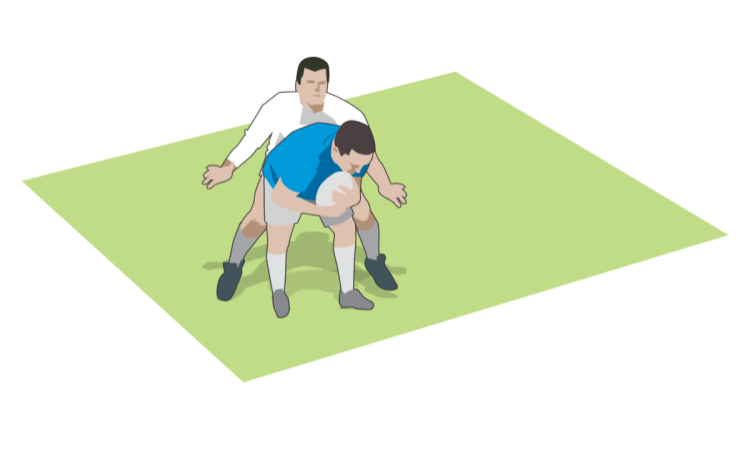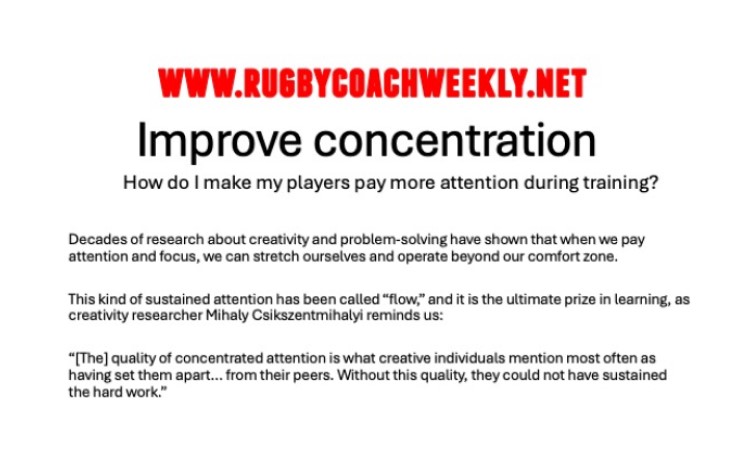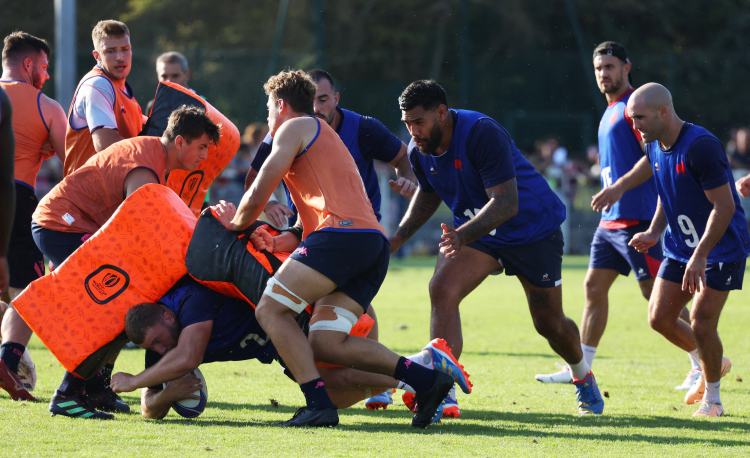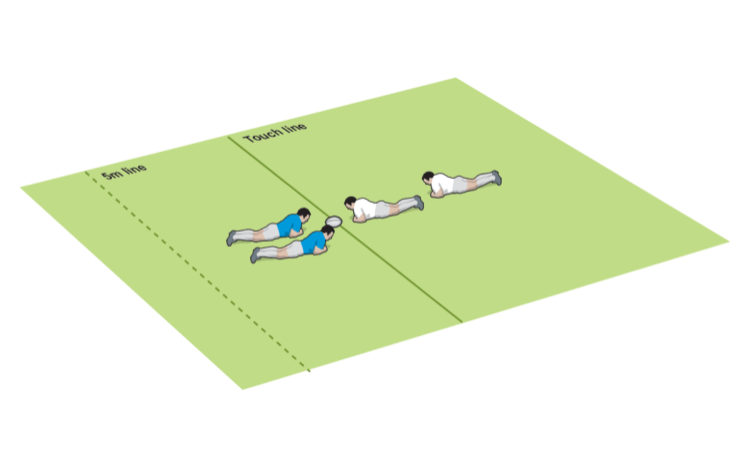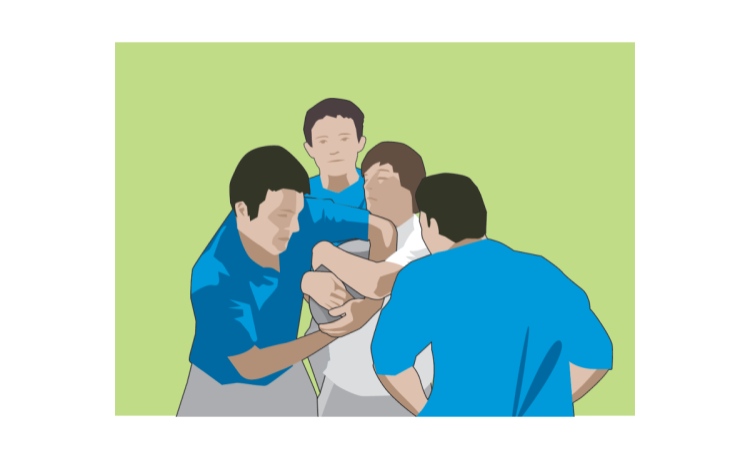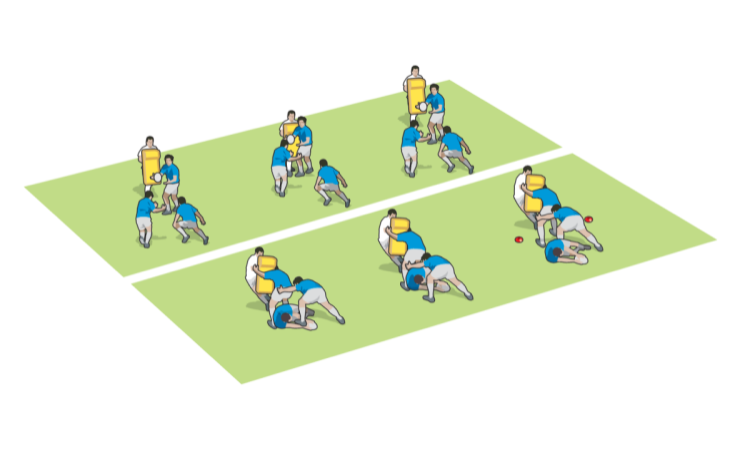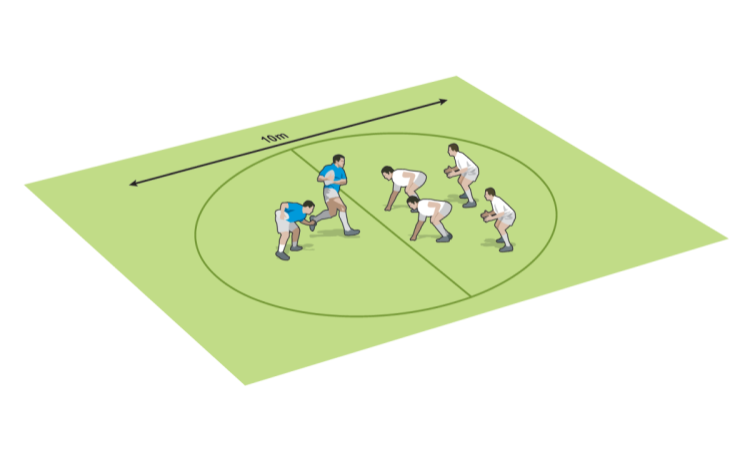You are viewing
1 of your 2 free articles
Rugby drill to get players taking contact and winning the advantage
Contactby Dan Cottrell
What you tell your players this rugby drill session is about
1. Taking contact aggressively to win the advantage.
2. Presenting the ball so the opposition cannot disrupt possession.
Key points to think about in the rugby drill
What is meant by a “power step?"
The power step is the final step taken by the ball carrier before hitting contact. He gets low by dropping his hips and takes a big step with the aim of knocking the tackler back.
What other things have to happen to ensure you win quick clean ball?
The support players have to arrive quickly and use their clear out skills dynamically. The scrum half has to arrive and pass the ball away before the opposition can further disrupt the ball.
What happens if the ball carrier doesn’t place the ball back?
This makes it easier for the opposition to step over and steal or slow down the ball.
What you tell your players to do in this rugby drill
1. Win the hit in contact and knock the defender back.
2. Go to ground only when the support arrives.
3. Get the ball back towards your team.
What you get your players to do in the drill
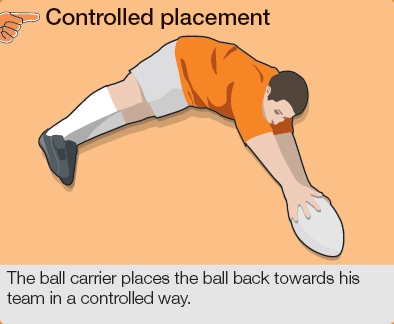
What to call out in this rugby drill
1. Add a second defender with a ruck pad. Now the second attacker has to pick up the ball and drive into the second pad. The first attacker has to get up quickly and act as scrum half.
2. Remove the ruck pads and have live defenders.
For more rugby drills to improve contact skills, click here.
1. Taking contact aggressively to win the advantage.
2. Presenting the ball so the opposition cannot disrupt possession.
Key points to think about in the rugby drill
What is meant by a “power step?"
The power step is the final step taken by the ball carrier before hitting contact. He gets low by dropping his hips and takes a big step with the aim of knocking the tackler back.
What other things have to happen to ensure you win quick clean ball?
The support players have to arrive quickly and use their clear out skills dynamically. The scrum half has to arrive and pass the ball away before the opposition can further disrupt the ball.
What happens if the ball carrier doesn’t place the ball back?
This makes it easier for the opposition to step over and steal or slow down the ball.
What you tell your players to do in this rugby drill
1. Win the hit in contact and knock the defender back.
2. Go to ground only when the support arrives.
3. Get the ball back towards your team.
What you get your players to do in the drill
- Work attackers in pairs against a defender with a ruck pad.
- The ball carrier starts two metres away from the pad.
- He accelerates and takes a big step as he hits the pad.
- He then takes short steps and fights to stay on his feet.
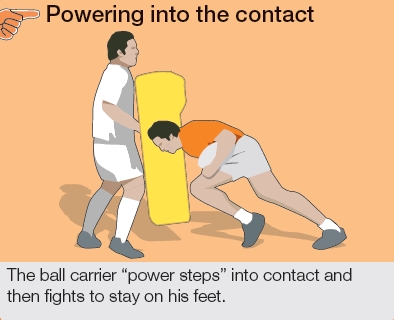
- When the ball carrier goes to ground he gets his body between the opposition and the ball and places the ball back.
- The second attacker steps over and drives the pad back.

What to call out in this rugby drill
- “Power your step into contact.”
- “Fight to stay on your feet.”
- “Get your body between the ball and the opposition.”
- “Stretch out and place the ball.”
1. Add a second defender with a ruck pad. Now the second attacker has to pick up the ball and drive into the second pad. The first attacker has to get up quickly and act as scrum half.
2. Remove the ruck pads and have live defenders.
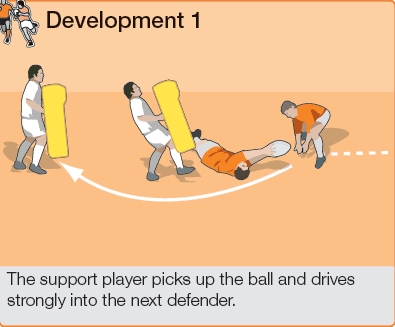
Put the rugby drill into a game situation
- Play full contact rugby between two equal teams on a wide pitch.
- The defending team can’t compete for the ball after a tackle.
- The ball carrier presents the ball and a team-mate has to ruck over before the ball can be passed.
- The ball is turned over after a try or if there is a knock on.
- Next allow the tackler only to compete for the ball once he is back on his feet.
- Finally move to a normal game.
For more rugby drills to improve contact skills, click here.
Newsletter Sign Up
Coaches Testimonials

Gerald Kearney, Downtown Las Vegas Soccer Club

Paul Butler, Florida, USA

Rick Shields, Springboro, USA

Tony Green, Pierrefonds Titans, Quebec, Canada
Subscribe Today
Be a more effective, more successful rugby coach
In a recent survey 89% of subscribers said Rugby Coach Weekly makes them more confident, 91% said Rugby Coach Weekly makes them a more effective coach and 93% said Rugby Coach Weekly makes them more inspired.
Get Weekly Inspiration
All the latest techniques and approaches
Rugby Coach Weekly offers proven and easy to use rugby drills, coaching sessions, practice plans, small-sided games, warm-ups, training tips and advice.
We've been at the cutting edge of rugby coaching since we launched in 2005, creating resources for the grassroots youth coach, following best practice from around the world and insights from the professional game.
More from us
© 2023 Rugby Coach Weekly
Part of Green Star Media Ltd. Company number: 3008779
We use cookies so we can provide you with the best online experience. By continuing to browse this site you are agreeing to our use of cookies. Click on the banner to find out more.





